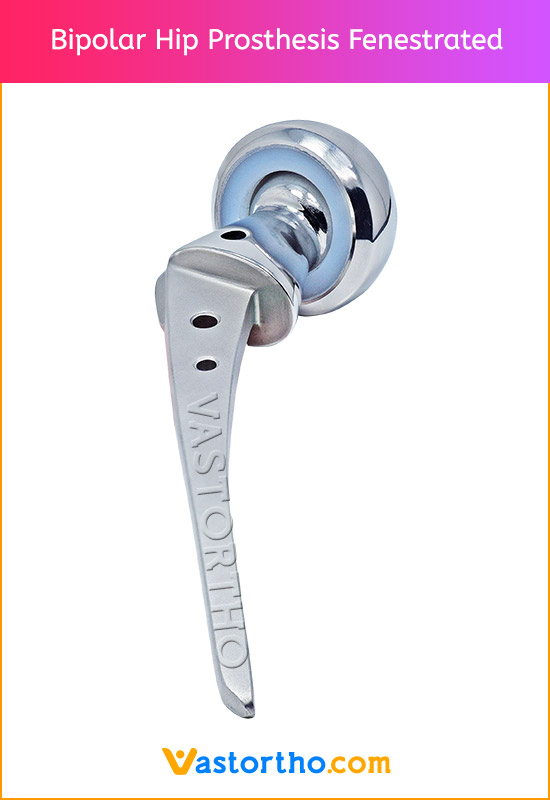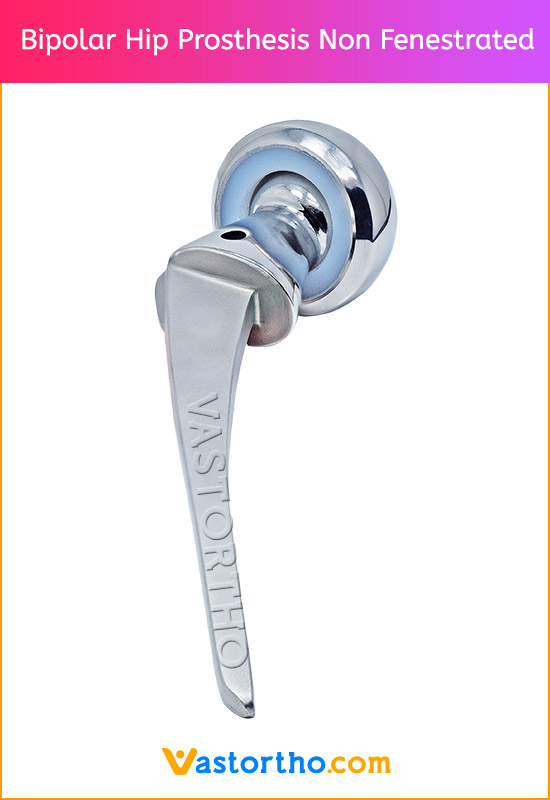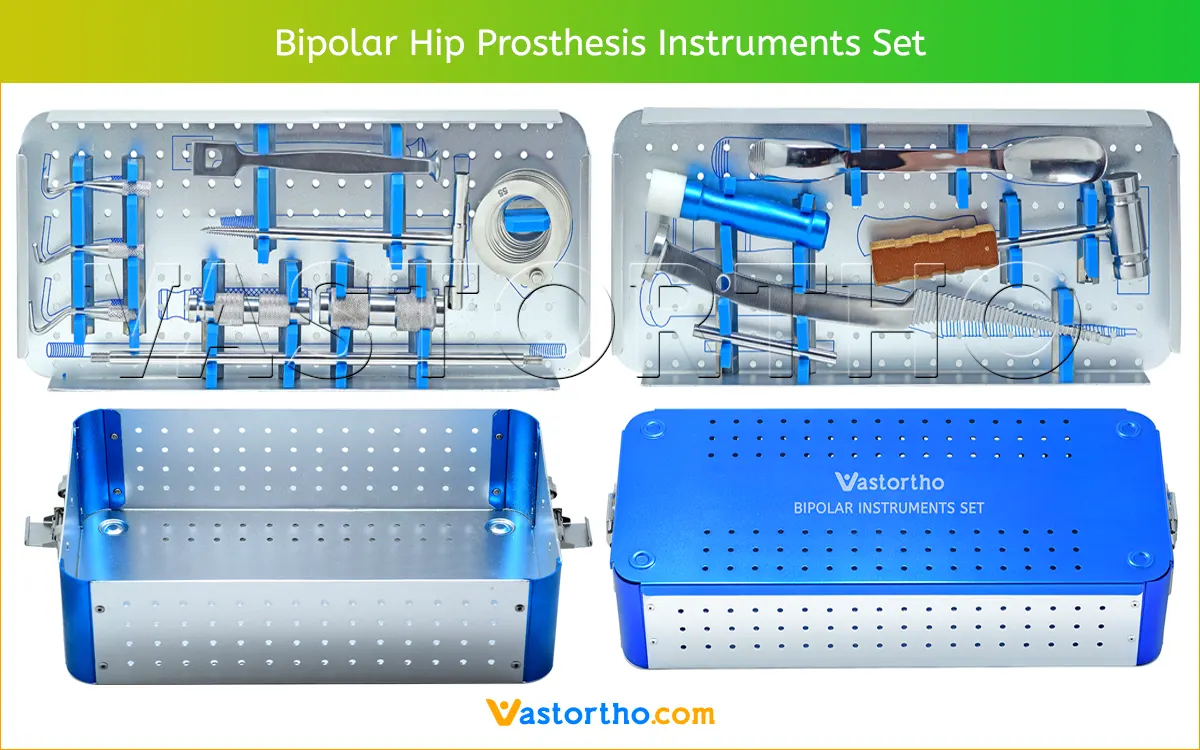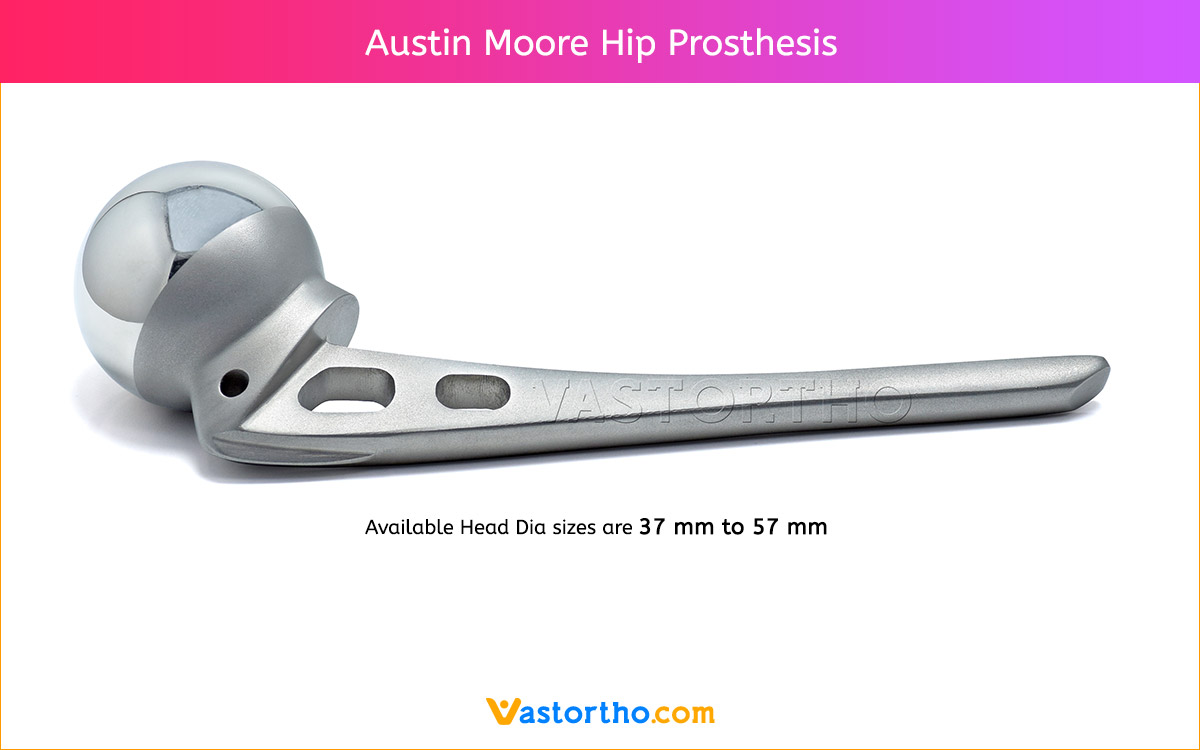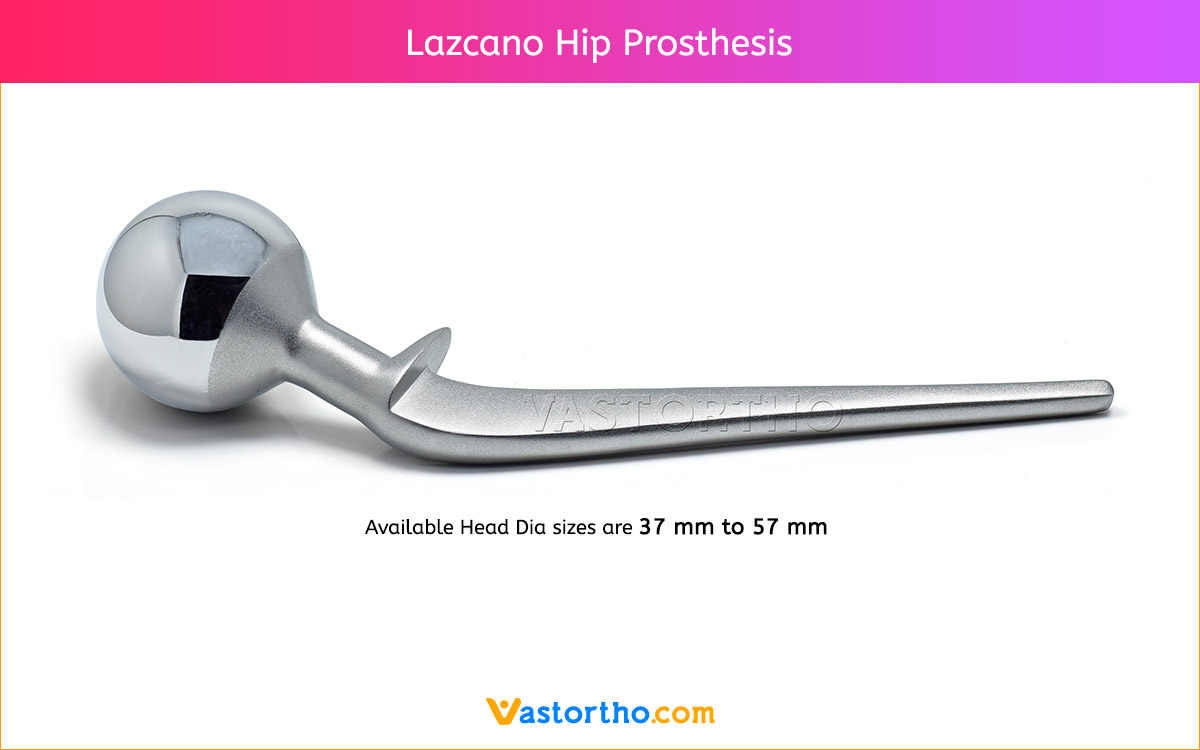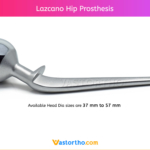Bipolar Hip Prosthesis Specification, Indication, Uses, Images and Sizes.
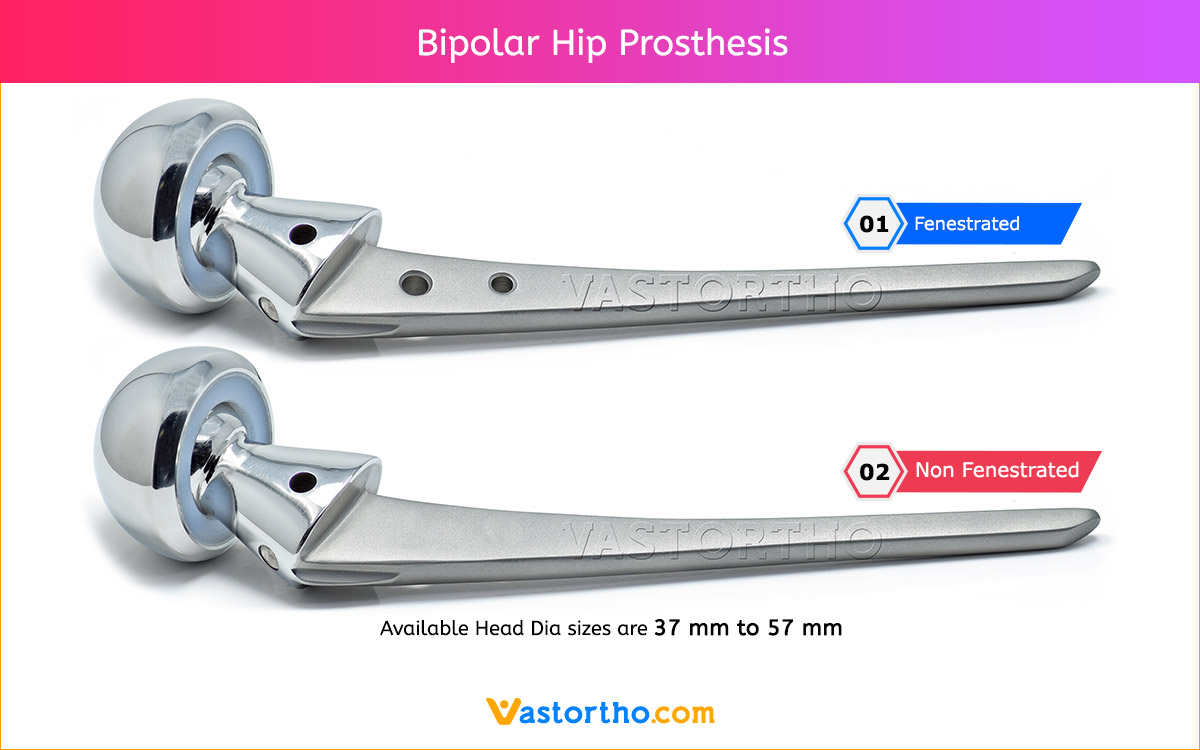
Bipolar Hip Prosthesis Specification
- Bipolar Hip arthroplasty is one of the options for treatment of avascular necrosis of the femoral head using Bipolar Hip Prosthesis. Acetabular erosion and groin pain are the most allowing for gross motion between the common complications. Bipolar hip arthroplasty using tight fitting cup and acetabular reaming in AVN hip has a low incidence of groin pain, acetabular erosion and revision in midterm followup. Good outcome and mid term survival can be achieved irrespective of the Ficat Stage.
- Bipolar Prosthesis available in different head sizes to fit accurately in the acetabulum. Available Head Dia sizes are 37mm, 38mm, 39mm, 40mm, 41mm, 42mm, 43mm, 44mm, 45mm, 46mm, 47mm, 48mm, 49mm, 50mm, 51mm, 52mm, 53mm, 54mm and 55mm. Any other Sizes will be also made on demand
- Available in both Sterile and Non-Sterile packing.
- Made up from high quality Medical grade stainless steel.
- Available in Fenestrated and Non Fenestrated.
Bipolar Hip Prosthesis Indication
Treatment for femoral neck fractures can be successfully achieved through a Bipolar Hemiarthroplasty using Bipolar Hip Prosthesis. Hemiarthroplasty is a surgical procedure that replaces one half of the hip joint with a prosthetic, while leaving the other half intact. There are several different options available for the type of device to be used; many prefer to use a bipolar type, which has a femoral head that swivels during movement. This helps to reduce the amount of wear and tear on the new joint for longer lasting results.

